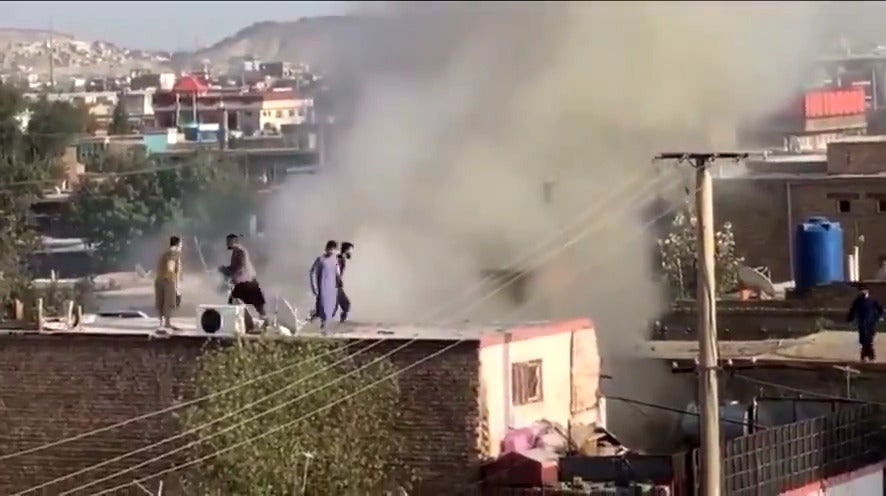US Investigating Claims Kabul Drone Strike Killed Seven Children
United States Central Command stated on Sunday that it was conducting “further investigations” into an American drone strike conducted earlier that day, following reports that ten civilians were killed in what Central Command claimed to have been a strike on an Islamic State “imminent threat” to Hamid Karzai International Airport.
The civilians killed in the drone strike were all from the same family. The family of Ezmari Ahmadi told the Los Angeles Times that the 40-year old had worked for Nutrition & Education International for the past 16 years. His work as a technical engineer for the non-governmental organization working to eliminate malnutrition in Afghanistan had allowed him to apply for a special immigrant visa that would have made him and his family eligible for evacuation from Kabul. Also killed was Ahmadi’s nephew, Nasser, who had worked as an interpreter for US Special Forces in Herat and guarded the US Consulate in the city before joining the Afghan National Army. He had come to Kabul to attempt to get a special immigrant visa as well. Relatives said he was due to be married on Monday.
Ahmadi’s brother Ramal lost three children in the attack: five year-old Binyamin; three year-old Arwin; and Aya, who was just one and a half years old. Witnesses said that they had entered Ezmari’s Toyota Corolla just before it was hit by a missile. A relative of the family, Mohammad Fawad showed photographs of the deceased on his phone to a Los Angeles Times reporter, using the Arabic acronym for Islamic State, which the group considers a pejorative against them:
“All of these kids were martyred.
Look at them. Which one of these people is Daesh? These people worked with the government — with the U.S. And look at these kids. Do you think they’re Daesh?”
United States Navy Capt. Bill Urban, Central Command spokesperson, had stated earlier on Sunday that US forces had conducted a “self-defense unmanned over-the-horizon airstrike” against an “imminent ISIS-K threat to Hamad Karzai International airport”. In a statement, he said that Central Command was confident that it had struck its target, with “significant secondary explosions” following the strike proving the presence of a “substantial” amount of explosives stored in the vehicle.
Following initial reports of civilians killed, Urban said that Central Command was “still assessing the results of this strike”, claiming that the secondary explosions “may have caused additional casualties”. He stated that Central Command was conducting further investigations into the claims, adding that “We would be deeply saddened by any potential loss of innocent life”.
Central Command had previously conducted another drone strike in Nangarhar province on Saturday, claiming to have killed an IS-K planner and another member in a missile strike on the car they were traveling in. The strikes have followed warnings by President Joe Biden that there would be retribution for the suicide attack on the airport last Thursday that killed 14 US troops and at least 170 Afghan civilians.
The civilian deaths bring into stark relief the myriad difficulties faced with the US’ claims of moving to an “over the horizon” counter terrorism strategy, something Washington has been elusive with even before the fall of Kabul. Without any in-country presence or even reliance on the Taliban for targeting intelligence, it is difficult to see how any strikes could be more “accurate” than the widely lambasted “signature strike” campaigns against Al-Qaeda and subsequently IS-K leadership in Northwest Pakistan.

